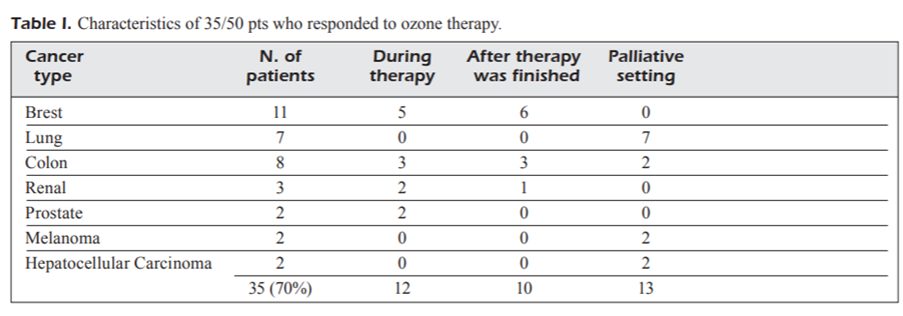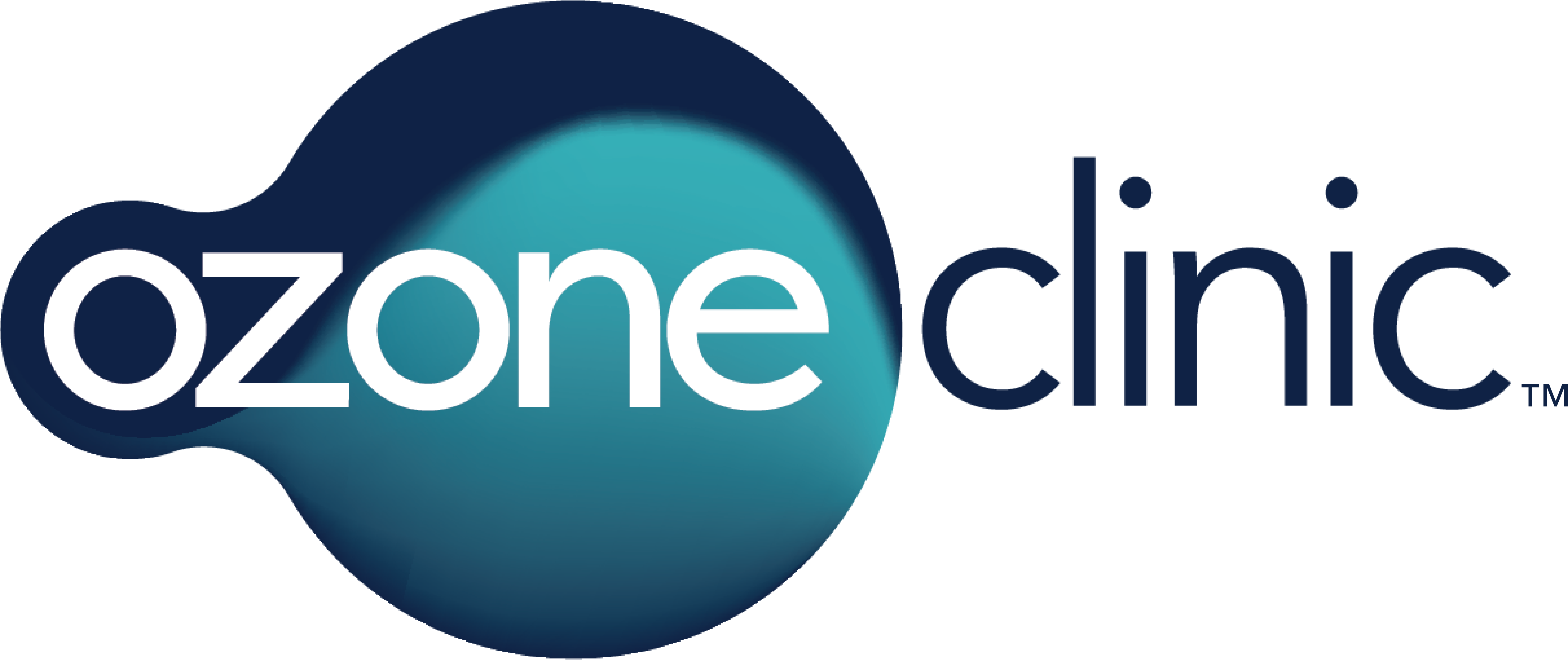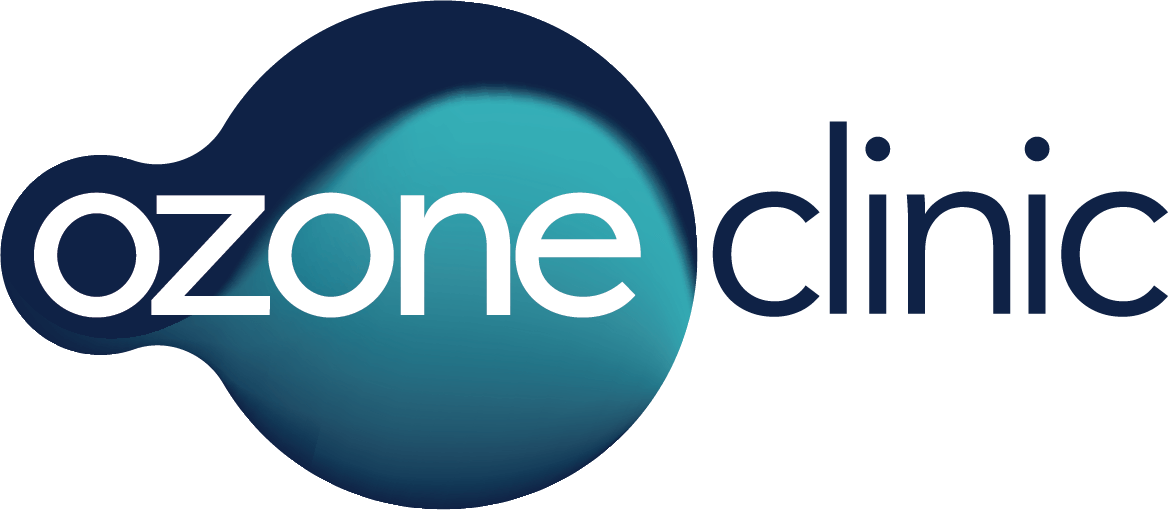Oxygen-ozone therapy as support and palliative therapy
European Review for Medical and Pharmacological Sciences

Keywords: Cancer, Fatigue, Ozone therapy
Abstract:
Fatigue may be cause by all cancer treatments, maybe because the tissue damage or the build-up of dead cells derived products.
Patients and Methods:
At the Mede Clinic in Sacile, Pordenone, Italy, from February 2016 to May 2018 we studied 50 patients with cancer and fatigue (15 with breast cancer, 12 with lung cancer, 11 with colon cancer, 5 with renal cancer, 3 with prostate cancer, 2 with melanoma and 2 hepatocellular carcinoma). Patients were treated with Auto Hemotransfusion (GAE) according to the SIOOT (Scientific Society of Oxygen Ozone Therapy) protocols, two times a week for one month and then twice monthly as maintenance therapy.
To evaluate the efficacy of oxygen-ozone therapy on cancer patients with fatigue, either during or after cancer therapy or in a palliative setting, we decided to undertake a study collecting the samples at the Tumor Center, CFS, Fibromyalgia and Oxygen Ozone Therapy Unit, Mede Clinic, Sacile (Pordenone, Italy). This work has been performed in compliance with the ethical values laid down by the Declaration of Helsinki, and informed consent documentation have been reviewed and agreed by the independent Ethics Committee at the Mede Clinic.
Statistical Analysis
The x2 test has been used to calculate the differences according to age, gender, and adverse events. Univariate analyses have been performed to match the study arms and the un-adjusted logic regression method has been used to assess crude odds ratios and 95{e43154ce913794517af217fcab284b44cfe906ba9a1c4ba2ecde5a9be0395ec5} confident intervals. Logistic progression models adjusted for major confounders like gender and age have been used to calculate adjusted odds ratios and 95{e43154ce913794517af217fcab284b44cfe906ba9a1c4ba2ecde5a9be0395ec5} confident ratios; p<0.05 has been considered statistically significant. ><0.05 has been considered statistically significant.

Results:
Nineteen of them were undergoing neoplastic treatment, 10 had already ended the cancer therapy and 21 were in a palliative setting. The Fatigue Severity Scale was used to assess the extent of fatigue in patients, to estimate the severity of the symptom with a score from 1 to 7. No side effects were found, and 35 patients (70{e43154ce913794517af217fcab284b44cfe906ba9a1c4ba2ecde5a9be0395ec5}) achieved a significant improvement (> 50{e43154ce913794517af217fcab284b44cfe906ba9a1c4ba2ecde5a9be0395ec5}) of the symptoms.
Between February 2016 to May 2018 we have enrolled in the study 50 consecutive patients with cancer and fatigue, 15 with breast cancer (9 during cancer therapy, 6 after having finished cancer therapy, all females, aged 38 to 72 years), 12 with lung cancer (all in a palliative setting, i.e. after AC and/or radiotherapy have been used and patients were in progression without any potential further effective therapy available, 10 males and 2 female, aged 50 to 78 years), 11 with colon cancer (5 during AC, 3 after therapy was finished and 3 in a palliative setting, 7 males and 4 females, aged 48 to 78 years), 5 with renal cancer (2 during cancer therapy, 1 after finishing cancer therapy and 2 in a palliative setting, 3 males and 2 females, aged 41 to 68 years), 3 with prostate cancer (all during cancer therapy, aged 60 to 81 years), 2 with melanoma (all in a palliative setting, both females and aged 39 to 52 years) and 2 hepatocellular carcinoma (both in a palliative setting, both males, aged 61 to 71 years). Therefore, of the 50 patients treated, 19 were during AC, 10 had already finished the cancer therapy and 21 were in a palliative setting (Table I). To assess the extent of fatigue in patients with cancer we have used the Fatigue Severity Scale, to estimate the severity of the symptom with a score from 1 to 720. Patients have been treated with auto hemotransfusion (GAE) according to the Scientific Society of Oxygen Ozone Therapy (SIOOT) protocols, twice a week for one month and then twice a month as maintenance therapy. No significant side effects have been found, while 35 patients (70{e43154ce913794517af217fcab284b44cfe906ba9a1c4ba2ecde5a9be0395ec5}) achieved a significant improvement (>50{e43154ce913794517af217fcab284b44cfe906ba9a1c4ba2ecde5a9be0395ec5} of the symptoms) of fatigue during therapy, after therapy was terminated, or in a palliative setting, without any significant difference among the three groups of patients, also due to the small numbers of patients in each group. Because the short period of follow up, we have not yet evaluate the duration of response obtained.
Conclusion:
Our preliminary data demonstrate that ozone therapy is a valid supportive therapy for fatigue in cancer patients, both during cancer therapy and in a palliative setting with no significant side effects.
Read more for Discussion and references
Sources
- (1) https://www.europeanreview.org/wp/wp-content/uploads/8030-8033.pdf [Corresponding Author: Umberto Tirelli, MD; e-mail: utirelli@cro.it]





